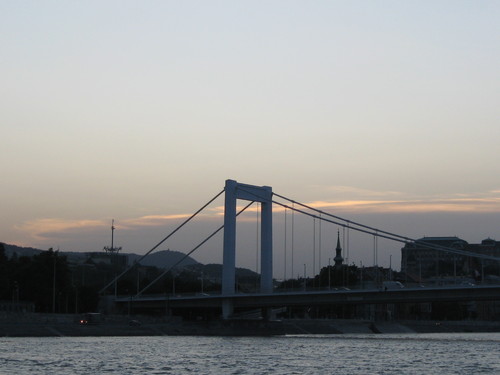An Opinion: The "New" Old Europe
Reflections on Budapest: Discovering the "New" Old Europe
July 2009
The post-war period in Western Europe -- the years during which Europe rebuilt itself -- had essentially ended by 1979. It was during the Carter years that governments within the sphere of U.S. influence and dominated by the American economy began to assert their independence. The European Common Market (ECM), consisting initially of a handful of pro-western economies operating in a loosely coordinated fashion during the 1960's, was evolving into something more significant both economically and politically. What had been a loose economic union was determined to expand into a larger political entity in order to compete economically with the U.S., as well as to achieve greater global influence politically.
By the 1980's, the original members of the ECM had fully recovered from the devastation of the Second World War, and the era of inexpensive European travel for Americans had ended. Arthur Frommer's 1960's bestseller, Europe on $5 a Day, now had a quaint ring to it, and of course had long since been replaced by a complete library of Frommer's travel guides.
In short, travel to Western Europe had become institutionalized, with all but the most daring travelers following well-worn paths to London, Paris and Rome as laid out by Frommer and Fodor. And when the Soviet Union finally collapsed in 1991 what little element of risk that had remained was suddenly gone.
Now I'm not suggesting that these well-worn European travel destinations are no longer worthwhile -- to the contrary, an itinerary which includes the great capitals of Western Europe constitutes an essential adventure of discovery, particularly for novice travelers.
But for more seasoned travelers, what created a sense of discovery and adventure only thirty years ago seems to be long gone. And in all honesty, despite the changes, for many years I've continued to immensely enjoy returning to these cities and countries time and again -- I almost always find something I hadn't previously noticed or hadn't fully appreciated.
Yet despite the inconveniences of the past, I genuinely miss many of the eccentric and peculiar aspects of the "old" Europe, such as having to figure out the conversions for so many different and colorful national currencies. How many times did I imagine I was wealthy because I suddenly had millions of Italian lire, thousands of Greek drachmas, or hundreds of French francs in my pocket!
So here we are in Budapest. Yes, there are plenty of tourists here -- we are obviously not the only visitors. But there are no throngs of tourists at every venue. And in the heart of Budapest there is a pervasive sense of history having stood still, of this city having barely been touched by progress. Monuments to the 1896 Hungarian millennial celebration are ubiquitous -- as if it had just occurred last week!
There is also construction everywhere you look. On every street corner historic facades are covered with scaffolding and in the process of being restored. Major thoroughfares are being rebuilt and new infrastructure projects are everywhere!
Yet its clear that Budapest is not yet a part of mainstream Europe. Signs of the forty year Soviet occupation remain. Its only been twenty years since the Communists gave up their control and plenty of drab and uninspired Soviet-era buildings abound. The subway stations look ancient and the trains that roll along the underground tracks squeal and sway as they plod along as if trapped in a time warp.
And in the center of the city's main park are the massive and crowded public baths, clearly unchanged since they were built more than one hundred years ago.
This is the Europe I recall from my travels of thirty years ago. But I suspect its not going to stay this way for long. Hungary joined the European Union in 2004 and while they will continue to use forints as their currency for the foreseeable future, I'm sure that eventually they too will adopt the practical but unromantic Euro.
In the meantime, Budapest is now Old Europe, preserved more or less (thanks to the Soviets) as it was at the end of the Second World War. So if you have a sense of adventure and want to experience Europe at its best, this should be your destination of choice. This is a rare opportunity to stay off the beaten path and to avoid institutionalized European tourism.
As for me, I have no doubt there's a lot more here to explore and I'm sure I've barely scraped the surface. Returning to Hungary to see the rest of the country will be near the top of my list for future travel adventures!
